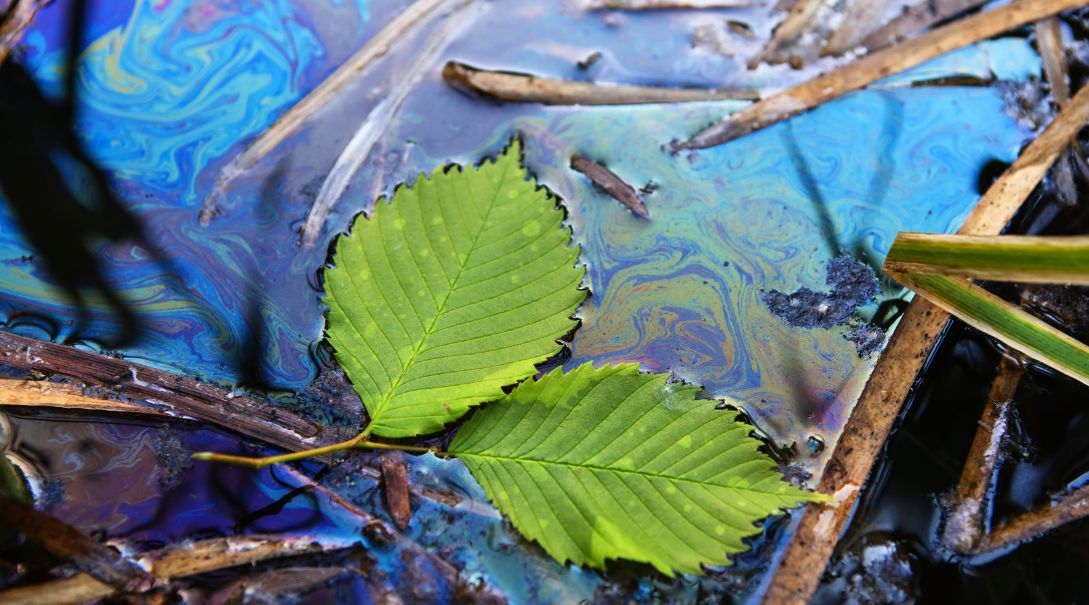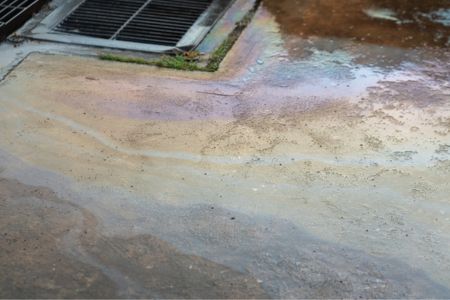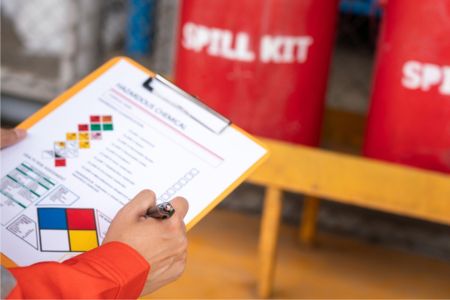When faced with the daunting task of diesel spill cleanup, understanding the methodology and importance of immediate action is paramount. Not just for environmental protection but also for public safety and ecological balance. Here’s a comprehensive guide on how to clean a diesel spill, merging urgency with efficiency.
Table of Contents
The Immediate Impact of Diesel Spills
A diesel spill is a critical environmental issue that demands immediate attention, regardless of size. Diesel spills have far-reaching consequences that extend beyond the immediate area of impact, affecting soil, groundwater, marine ecosystems, and much more. Here are a few of the immediate effects of a diesel spill:
- Environmental Contamination: Diesel is a complex mixture of hydrocarbons that can contaminate soil and water sources upon contact. Its lighter components can evaporate, contributing to air pollution, while its heavier components persist in the environment, posing long-term contamination risks.
- Water Pollution: Diesel spreads rapidly on the surface of water bodies due to its lower density than water, creating a thin film that can cover large areas. This film disrupts the oxygen exchange necessary for aquatic life, leading to hypoxic conditions.
- Toxicity to Marine Life: Diesel contains toxic compounds like benzene, toluene, ethylbenzene, and xylene. These can be lethal to marine organisms, causing immediate harm to fish, plankton, and other aquatic life. The spill can disrupt the food chain, leading to broader ecological imbalances.
- Impact on Birds and Wildlife: Birds and mammals that come into contact with diesel-contaminated water can suffer from skin irritation, damaged feathers or fur, and poisoning if they ingest contaminated substances while grooming.
- Human Health Risks: Diesel spills pose direct health risks to humans, particularly those involved in cleanup operations. Inhalation of fumes can lead to respiratory problems, headaches, dizziness, and nausea. Skin contact can cause dermatitis and burns.
- Economic Consequences: The economic fallout of a diesel spill can be substantial. It can affect local fisheries, tourism, and recreation. The cost of cleanup and potential legal liabilities can also be significant for responsible parties.
- Property Damage: Diesel can seep into the soil, affecting the integrity of structures, pipelines, and roadways, leading to costly repairs and long-term property damage, particularly in urban or industrial areas.
- Fire Hazards:Diesel is flammable, and spills can pose fire hazards, especially in enclosed spaces or near ignition sources, adding a layer of risk in urban environments and industrial settings.
- Long-Term Soil and Water Quality Degradation: Even after cleanup, residual diesel components can remain in the soil and water, leading to long-term environmental degradation, affecting groundwater quality, soil fertility, and overall ecosystem health.
- Regulatory and Compliance Issues: Diesel spills often trigger regulatory actions. Entities responsible for the spill can face fines, sanctions, and increased regulatory scrutiny, adding to the urgency of proper spill management.
By delving into these specific impacts, it becomes clear why immediate and effective diesel spill cleanup is not just an environmental concern but a multifaceted issue affecting health, economy, and community well-being.
Step-by-Step Guide to Diesel Spill Cleanup
Effectively managing a diesel spill requires a systematic approach. Here’s a step-by-step guide on how to clean a diesel spill safely and effectively.
Step 1: Immediate Assessment
- Time Sensitivity: Immediate action is crucial. The first 15-30 minutes are often the most critical in spill response.
- Quantify Spill: To estimate the spill’s magnitude, use tools like spill volume calculators, which can be found through environmental protection agencies or specialized online resources.
- Risk Mapping: Use local environmental maps and data (available from local environmental agencies or GIS databases) to identify sensitive areas such as nearby rivers, lakes, public parks, schools, or wildlife reserves. High-risk areas include those with high biodiversity, endangered species habitats, or high human population density.
Step 2: Secure the Area
- Visual Markers: Set up cones, caution tape, or barriers, which can be sourced from emergency response kits or local authorities.
- Communication Protocol: Establish a clear communication plan, designating a team leader to coordinate the response and communicate with external emergency services.
Step 3: Personal Safety Measures
- PPE Check: Ensure that the PPE is compliant with OSHA (Occupational Safety and Health Administration) standards. Regular training sessions should be held to educate the staff on proper PPE usage.
- Decontamination Station: Set this up at a safe distance from the spill. It should include facilities for washing skin and eyes and a separate area for cleaning PPE.
Step 4: Containment
- Types of Absorbents: There are several types of absorbents, including:
- Booms: Long, floating barriers used on water to contain and absorb oil. Best for perimeter containment in ponds, streams, or calm waters.
- Pads and Rolls: Made from synthetic materials, these are suitable for land and water spills. They are particularly effective for quickly responding to smaller spills or absorbing residual diesel.
- Loose Absorbents:Granular materials like vermiculite, peat moss, or clay absorbents are ideal for land spills. They are spread over and mixed with the spilled diesel to absorb it.
- Hydrophobic Absorbents: These repel water and only absorb oil, making them perfect for water spills. They can be in the form of booms, pads, or loose particulates.
- Immediate Action: Start containment at the periphery of the spill. This strategy helps to isolate the spill and prevent it from expanding.
- Wind and Water Currents: When dealing with water spills, consider wind direction and water currents. Place booms upstream or upwind to catch the moving oil, creating a containment perimeter that adapts to environmental conditions.
- Regular Inspection: Once the absorbents are in place, regularly inspect them for saturation. Replace or add additional absorbents as needed to ensure continuous containment.
Step 5: Absorption and Removal
- Sequential Application: Apply thicker absorbents initially for heavy pooling, followed by finer materials for residual traces. This method ensures more comprehensive absorption.
- Skimmers: In water spills, skimmers can be used to remove diesel from the water’s surface. There are several types of skimmers, such as:
- Weir Skimmers: These allow the oil to flow over a weir. The oil is then collected in a sump.
- Oleophilic Skimmers: These use materials that selectively absorb oil, not water.
- Suction Skimmers: These use vacuum power to suck up the oil from the water surface.
- Manual Tools: For smaller spills or hard-to-reach areas, manual tools like scoops, buckets, or shovels can be used. These tools should be non-sparking to prevent fire hazards.
- Ventilation: If the spill is indoors or in a poorly ventilated area, ensure adequate ventilation to avoid the buildup of toxic fumes.
Step 6: Prevention of Runoff
- Elevation Check: Use topographical maps to understand the landscape and natural water flow paths to effectively divert the spill from sensitive areas.
- Temporary Barriers: Utilize sandbags or inflatable barriers (which can be sourced from emergency response suppliers) to create temporary diversions.
Step 7: Waste Disposal
- Waste Categorization: Segregate waste into solid (used absorbents, contaminated soil) and liquid (recovered diesel) waste to aid in efficient and compliant disposal.
- Licensed Disposal Sites: Coordinate with local environmental authorities to identify licensed hazardous waste disposal sites and arrange transportation.
Step 8: Reporting
- Incident Log: Document every action and decision, including timestamps. This log is crucial for regulatory compliance and potential audits.
- Authority Liaison: Assign a team member to constantly communicate with relevant authorities, providing updates and compliance documentation.
Step 9: Environmental Monitoring
- Baseline Data: Prioritize collecting pre-spill data in sensitive areas as part of regular environmental monitoring protocols.
- Wildlife Monitoring: Engage local wildlife agencies or environmental consultants to survey and monitor affected wildlife, providing care for affected animals if necessary.
Step 10: Remediation
- Site Evaluation: Conduct a thorough environmental assessment of the affected area to determine the extent of environmental damage involving soil, water, and vegetation testing.
- Soil Remediation:
- Bioremediation: Utilize natural or introduced microorganisms to break down and absorb the diesel contaminants in the soil.
- Soil Washing: In some cases, contaminated soil can be excavated and treated through soil washing techniques, where chemicals are used to separate diesel from the soil particles.
- Thermal Desorption: A process where heat is used to vaporize contaminants from the soil, which are then condensed and collected.
- Water Remediation:
- Activated Carbon Filtration: Use activated carbon filters to remove residual hydrocarbons from water bodies.
- Aeration: Increase the oxygen content in water to help break down contaminants.
- Phytoremediation: Employ plants known for their ability to absorb contaminants from water and soil.
Step 10: Review and Improvement
- Feedback Session: Organize a session with all involved personnel to discuss what went well and what could be improved, which should be done immediately after the incident.
- Public Report: If the spill has impacted the community, prepare a detailed report explaining the spill, the response actions taken, and future preventive measures, which should be made publicly available to maintain transparency.
Responders are equipped to handle diesel spills more effectively by following these detailed and specific steps, ensuring thorough cleanup, compliance with regulations, and minimal environmental impact. This diesel spill cleanup process underscores the importance of preparation, knowledge, and collaboration in environmental emergency response.
How to Prevent a Diesel Spill
Preventing a diesel spill is far more effective and less costly than dealing with its aftermath. You won’t need to know how to clean a diesel spill if you prevent a spill from occurring in the first place. Here’s how to prevent diesel spills:
Regular Maintenance and Inspections
- Routine Checks: Regularly inspect tanks, pipelines, and containers that store diesel. Look for signs of wear, corrosion, or damage.
- Preventative Maintenance: Perform routine maintenance on all equipment and storage facilities to eliminate the common causes of storage tank leaks, including replacing worn parts, applying corrosion protection, and ensuring all fittings are tight.
- Leak Detection Systems: Install leak detection systems in storage tanks and pipelines. These systems can alert you to even small leaks, allowing for prompt action.
Proper Storage and Handling
- Appropriate Containers: Use storage containers that are specifically designed for diesel. These should be robust, corrosion-resistant, and comply with industry standards.
- Secondary Containment: Implement secondary containment systems, such as bunds or dykes, around diesel storage areas to contain spills if they occur.
- Safe Transfer Procedures: When transferring diesel, use equipment like spill-proof nozzles and overfill alarms. Ensure that all personnel are trained in safe handling procedures.
Employee Training and Awareness
- Spill Response Training: Regularly train employees on how to respond to a diesel spill, including the use of emergency equipment and containment measures.
- Best Practice Education: Educate employees about the best practices for handling diesel, including proper storage, transfer, and disposal methods.
- Safety Culture: Foster a safety culture where employees feel responsible for spill prevention and are encouraged to report potential risks.
Environmental Safety Measures
- Site Planning: Consider environmental factors when situating diesel storage or transfer areas. Avoid locations near water bodies or in flood-prone areas.
- Erosion Control: Implement erosion control measures to prevent soil degradation that can lead to tank instability and spills.
Regulatory Compliance
- Standards and Regulations: Stay updated with local, state, and federal diesel storage and handling regulations. Compliance helps in minimizing risks associated with diesel spills.
- Permits and Inspections: Obtain necessary permits for diesel storage and ensure relevant authorities regularly inspect your facilities.
AOTC Can Handle Your Diesel Spill Cleanup
The effective management of diesel spills hinges on efficient diesel spill cleanup strategies and, crucially, on proactive prevention and preparedness. Organizations can significantly reduce the likelihood of diesel spills by implementing the comprehensive prevention measures outlined in this guide.
However, despite the best preventive measures, spills can still occur. In such cases, immediate response and knowing how to clean a diesel spill is crucial to minimize environmental impact and regulatory repercussions. This is where AOTC’s 24/7 emergency spill response services become invaluable. Having access to expert assistance around the clock ensures that any diesel spill cleanup is addressed promptly and effectively, mitigating potential hazards and ensuring compliance with environmental remediation regulations. Contact us today if you require assistance.



